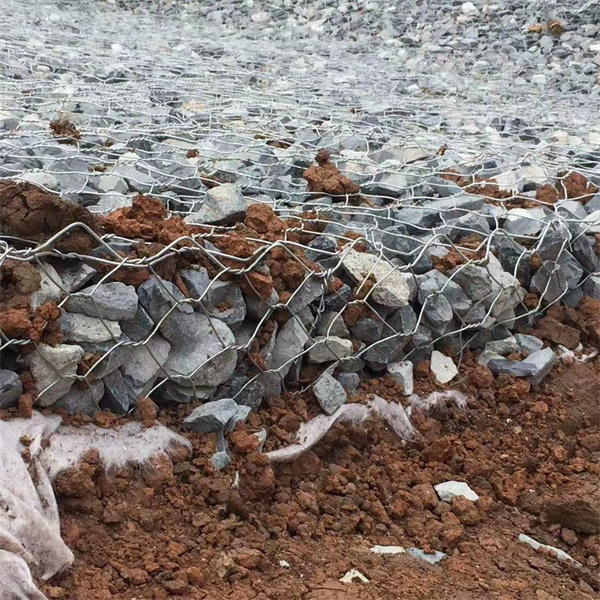Nov . 06, 2024 01:20 Back to list
Innovative Solutions for Eco-Friendly Gabion Structures in Erosion Control
The Benefits and Applications of Gabion Protection
Gabion protection has emerged as a significant solution for various environmental and engineering challenges. These stone-filled wire mesh cages are not only a practical choice for erosion control, but they also provide aesthetic and structural benefits in construction projects. This article will delve into what gabion protection is, its advantages, and its diverse applications.
What is Gabion Protection?
Gabions are large, rectangular containers, usually made of heavy-gauge steel wire or galvanized steel. They are filled with rocks, stones, or other natural materials and can be stacked to form walls, embankments, or other structures. The name gabion is derived from the Italian word gabbione, meaning big cage. This innovative engineering solution has been utilized for centuries, but its popularity has surged in recent years due to increasing concerns over erosion, flooding, and landscape management.
Advantages of Gabion Protection
1. Erosion Control One of the most significant benefits of gabion protection is its ability to prevent soil erosion. By forming barriers along riverbanks, road embankments, and construction sites, gabions absorb the energy of flowing water, reducing the impact of hydraulic forces on the soil.
2. Flexibility and Adaptability Gabions can be easily configured in various shapes and sizes to suit specific project requirements. Their adaptability means they can be used in different environments, from rugged topographies to urban settings.
3. Cost-Effectiveness Compared to traditional masonry or concrete solutions, gabions are often more economical. They require less material and labor for installation, contributing to lower overall project costs.
4. Environmental Benefits Gabions are generally constructed from natural materials, making them a more eco-friendly option. They promote biodiversity by providing habitats for small animals and plants, and over time, vegetation can grow within the rocks, further stabilizing the structure and blending it into the landscape.
5. Aesthetic Appeal Gabions offer a unique aesthetic advantage; they can be filled with various materials, including colored stones or decorative rocks, allowing for creative designs. This flexibility makes gabion structures visually appealing, merging functionality with art.
gabion protection

Applications of Gabion Protection
1. Riverbank Stabilization Gabions are widely used in civil engineering projects for riverbank protection. They prevent soil erosion along water bodies, safeguarding both natural habitats and human infrastructure.
2. Retaining Walls In construction, gabion walls are often used as retaining walls to hold back soil in hilly or sloped areas. Their permeability allows for drainage, reducing hydrostatic pressure behind the wall and preventing failure.
3. Fishing Habitats Gabion structures can be placed in water bodies to create artificial reefs and provide habitats for fish and other aquatic life. This application not only boosts biodiversity but also enhances recreational fishing opportunities.
4. Landscaping and Outdoor Design In landscaping, gabions can be creatively used as garden beds, seating areas, and decorative features. Their rustic appearance complements natural landscapes while serving practical purposes.
5. Flood Control Gabions can be employed to create barriers during flood events, redirecting water flow and protecting vulnerable areas. Their ability to adapt and absorb water dynamics makes them valuable in flood management strategies.
6. Shock Absorption In areas prone to landslides or seismic activity, gabions can help absorb shock and stabilize the ground. Their flexible design allows them to move slightly without failing, making them a reliable choice in challenging environments.
Conclusion
Gabion protection is a multifaceted solution that addresses numerous environmental and engineering challenges. Its versatility, cost-effectiveness, and aesthetic appeal make it a popular choice in various applications, from riverbank stabilization to creative landscaping. As our world grapples with the effects of climate change and rapid urbanization, the innovative use of gabions may play a crucial role in sustainable development, ensuring that our natural landscapes are preserved while meeting the ever-growing demands of modern infrastructure.
-
Visualizing Gabion 3D Integration in Urban Landscapes with Rendering
NewsJul.23,2025
-
The Design and Sustainability of Gabion Wire Mesh Panels
NewsJul.23,2025
-
The Acoustic Performance of Gabion Sound Barriers in Urban Environments
NewsJul.23,2025
-
Mastering the Installation of Galvanized Gabion Structures
NewsJul.23,2025
-
Gabion Boxes: Pioneering Sustainable Infrastructure Across the Globe
NewsJul.23,2025
-
Custom PVC Coated Gabion Boxes for Aesthetic Excellence
NewsJul.23,2025
-
Installation Tips for Gabion Wire Baskets in Erosion Control Projects
NewsJul.21,2025






